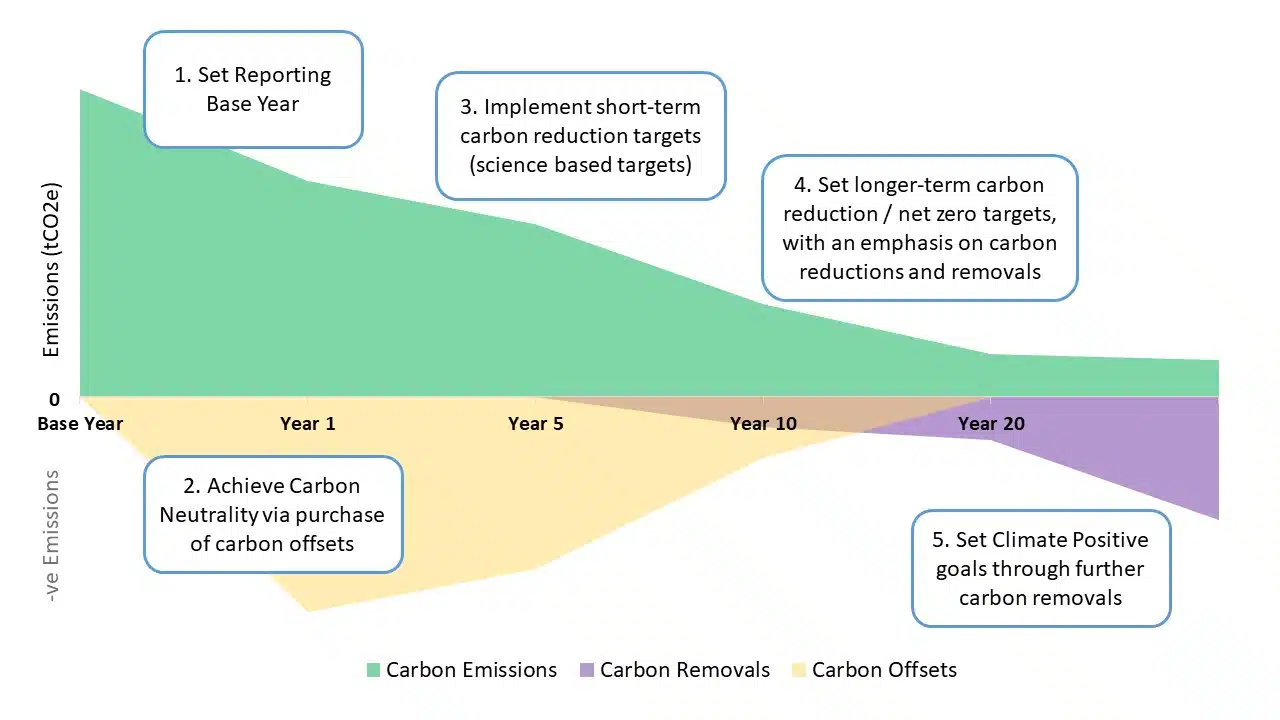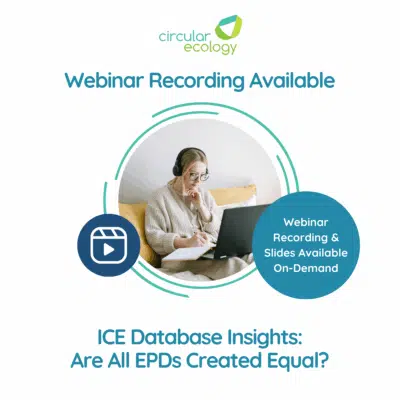Once an organisation has successfully implemented annual reporting of its organisational carbon footprint, it should start to set out a strategy to continually measure, manage, report and ultimately reduce its carbon footprint. This strategy can be developed through a Carbon Reduction Plan & Target Setting.
Carbon Reduction Plan & Target Setting

There are several ways an organisation can approach its Carbon Reduction Plan and Target Setting. As such, the adopted approach should consider the organisation’s activities, future growth projections, and available resources.
To establish an effective sustainability strategy, organisations should combine both longer-term strategic thinking with shorter-term targets to subsequently incentivise more immediate action whilst remaining cognisant of embedding sustainability into the organisation’s wider goals.
Setting carbon goals and objectives is not a prescriptive process, and so each organisation will need to assess their own individual circumstances and requirements. Similarly, target ambitions can be adopted individually or more ideally in combination with each other. To illustrate, the below options show some of the more typical approaches to carbon target setting:
1. Setting a Base Year
To set carbon reduction targets and objectives, an organisation must first benchmark its emissions by adopting a suitable Base Year. This should typically be the most recent reporting year (12-month period) for which decent quality data is available, and furthermore where activities were deemed representative of normal operations.

2. Carbon Neutrality
The exact definition of Carbon Neutral is still not universally agreed upon, but typically this refers to the balancing of an organisation’s emissions by means of the purchasing of carbon reduction credits (also known as carbon offsets). Carbon Neutrality requires at least the purchase of offsets to equivalent levels as the reported emissions released by the organisation and does not require the organisation to reduce its actual operational emissions (although this is still strongly recommended).
3. Science Based Targets (SBTs)
The Paris Agreement, signed in 2015, set out an ambition to limit average global temperature rises to well-below two degrees (WB2D), and ideally to 1.5 degrees (1.5D) compared to pre-industrial levels.
For businesses to align to this ambition, frameworks have been developed for target reductions aligned to the latest climate science. These are known as Science Based Targets (SBTs). SBTs utilise a remaining global carbon budget typically modelled to the WB2D and 1.5D climate scenarios, and subsequently provide organisations with specific reduction targets reflective of its base year emissions levels. Typically, SBTs can be near-term targets, with target years set between 5-10 years from the date of adoption, or longer-term targets to be achieved before 2050.
Targets can be expressed as absolute (tCO2e) or intensity (tCO2e / metric) reductions. Target ambition must also align to the minimum reductions stated by the WB2D and 1.5D scenarios, respectively. One such framework can be seen with Science Based Target Initiative (SBTi), which involves a formal public commitment, target validation process, and annual disclosures of emissions for public transparency and scrutiny. Making commitments via the Science Based Targets initiative sets a clear, specific and verifiable set of goals for your organisation. These formal commitments can moreover guide your reduction journey and differentiate you against competitors and peers.
4. Net Zero
Like Carbon Neutrality, Net Zero can have several different meanings depending on context. Although, when referring to organisational footprints, this term typically includes an initial physical reduction of emissions in line with the latest climate science (SBTs). The final balancing of residual emissions is then achieved through carbon removals or in part carbon credits (offsets). Offsets should only be considered once actual carbon reduction limits have been reached. The extent offsets can be utilised under Net Zero targets can vary between different sectors and Net Zero frameworks.
Net Zero can also have a slightly different definition when discussed within the context of embodied carbon for products and buildings. Please refer to our guidance on Net Zero Carbon Buildings for more information on this topic.
5. Climate Positive
Climate Positive, also referred to as Carbon Negative or Net Negative is a relatively new term and refers to the overall removal of emissions to a greater level than the emissions released. This combines the approach for Net Zero with additional removals greater than the organisation’s remaining residual emissions, in the form of technology (e.g., carbon capture) or sequestration (e.g., nature-based solutions).
Please use the form below if you would like to reach out to us regarding these services:
Webinar Recap: ICE Insights: Methodological Challenges Behind the Scenes
Circular Ecology hosted the fourth webinar in the ICE Database Insights webinar mini series on [...]
Jun
DESNZ (Defra) 2025 GHG Emissions Factors Released
The UK Department for Energy Security and Net Zero (DESNZ) have just released the 2025 [...]
Jun
Webinar Recap: ICE Insights: Are All EPDs Created Equal?
On Thursday, 22nd May, Circular Ecology hosted the third instalment in the ICE Database Insights [...]
May
Webinar Recap: ICE Insights: ICE Analytical Review Processes
On Wednesday, April 30th, Circular Ecology hosted the second session of our ICE Database Insights [...]
Apr




